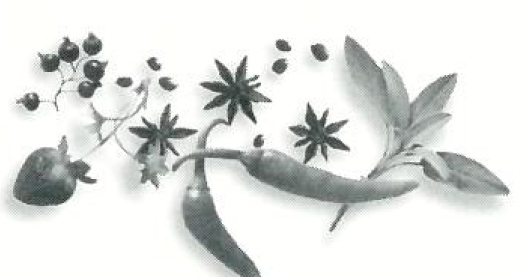
As a front-line organic gardener allergic to pesticides of any stripe, I have ample opportunity to practice Integrated Pest Management (IPM) in our huge, teeming garden. Lately, as clouds of pests and beneficial organisms descend onto our spring crops, I begin to see that Zen practice itself if a kind of “integrated pest management.” “Keep your enemies close, and practice diligently as if to save your head from fire,” I mutter to myself as sucking whiteflies blanket the lower leaves of our heritage tomato plants growing in the greenhouse.
IPM has some very simple guidelines for practice that arise out of an ecosystem approach to working with pests in the garden. In these guidelines I hear echoes of naturalist John Muir from almost a century ago: “When we try and pick out anything by itself we find it hitched to everything else in the universe.” This is sound Buddhist teaching, and so are these IPM guidelines from which core Zen principles step boldly forth:
1. Know your garden well. Be vigilant and observant. Check your plants regularly for signs of pest damage and if damage occurs, monitor and track exactly what is going on.
Mindfulness
Breathing in, I notice the first whiteflies on the edge of our prize cherry tomatoes. Breathing out, I feel my pulse rate quicken, my teeth clench.
2. Determine the source of your pest population and how much damage you and your garden can sustain. Know the biology of your pest. Begin to craft a pest response plan that is grounded in discerning observation and in your capacity for pest tolerance.
Equanimous Mind
Before me is the whitefly, relatedto scale insects, mealy bugs, and aphids. Whiteflies suck plant juices, secrete a white wax, and produce “honeydew” that causes sooty mold on tomato leaves. I don’t want whiteflies to breed and colonize the whole greenhouse. Each adult female lays 200-400 eggs on tomato leaves. These eggs hatch in 5-10 days, and whiteflies are full grown in three weeks and ready to breed. Today tomatoes—tomorrow the world! Settle down—what’s your plan?
3. When it comes to pest management, begin with the simplest and most fundamental solution first. Make sure your cultivation, fertilization, and irrigation procedures are consistent and regular, neither too heavy nor too light.
Cultivate the Middle Way
It’s way too hot in the greenhouse and the soil looks hard and seized. Also, I’ve been overwatering and, worst of all, watering at night, after evening zazen. Big no-no. I’ll cultivate at the base of the tomatoes so the soil can breathe and I’ll set up a drip hose. But whiteflies keep hatching. Time to gear up.
4. If pests persist, set up good physical controls like nets, bug vacuums, sticky tape traps, floating row covers, or barrier fences. It may also be necessary to spray at this stage.
Skillful Means
In the early morning when the whiteflies are cold and torpid I’ll suck them up with Martha’s little dust buster vac. Also, whiteflies love the color yellow, so I’ll set up some sticky traps using yellow tape all around the tomato plants. I hope I catch pregnant whiteflies!
5. If physical controls do not suffice, turn to biological solutions. Encourage beneficial insects in your garden or purchase host-specific beneficials to release near your infested crops. A healthy beneficial insect population will prey on and/or parasitize your pest population.
Interbeing
OK. It’s time to get tough. I’ll order a few hundred golden chalcid wasps from Harmony Farm Supply and release them in the greenhouse. This tiny parasitic wasp will lay her eggs in the whitefly larvae and when her eggs hatch, the wasp will eat the whitefly larvae from the inside out. May sangha relations become complete!
6. Finally, if these controls are not effective, resort to certified organic chemical methods. Sometimes these methods may precede Step 5, but usually they are a last measure.
Perfect Wisdom, Gone Beyond
For the whitefly, I can spray insecticidal soap, kinoprene growth regulator, or horticultural oil. A disciple of the Buddha does not kill. I’ll spray the whiteflies only and then release the golden chalcids to do the big dirty work. I can only imagine what my next incarnation will be!
These are the basic IPM guidelines, but while I’m at it, I’ll offer you a seventh Zen IPM reminder, influenced by daily recitation of the Heart Sutra. This guideline is an excellent chaser, meant to be chanted immediately after tasting your own fresh prey, the first ripe greenhouse tomato of the season. So toast the integrated practice of whitefly, golden chalcid wasp, black soil, red tomato, and harried gardener, and remember:
7. No pests, and no extinction of them!
Thank you for subscribing to Tricycle! As a nonprofit, we depend on readers like you to keep Buddhist teachings and practices widely available.